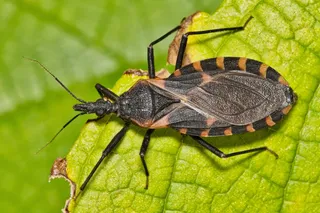On Friday, the New York Academy of Sciences rounded up four science all-stars at the Academy's new downtown home and let them loose on some of the hottest topics in their respective fields. In case you missed it, here are the highlights:
1) Blame it on my genes
Columbia professor of psychiatry and law Paul Appelbaum tackled the messiness that results when law and genetics mix. Consider that some genes seem to show a correlation with aggressive behavior, particularly when they occur in combination with environmental factors (like child abuse) that might promote aggression. These findings, Appelbaum says, "have opened the eyes of people in law and criminology to the importance of behavioral genetics." Specifically, some defense lawyers realized that genes might be a viable excuse. Think of the insanity defense: "Our legal system excuses people from culpability if they have an impaired ability to control their behavior," Appelbaum explains.
...













